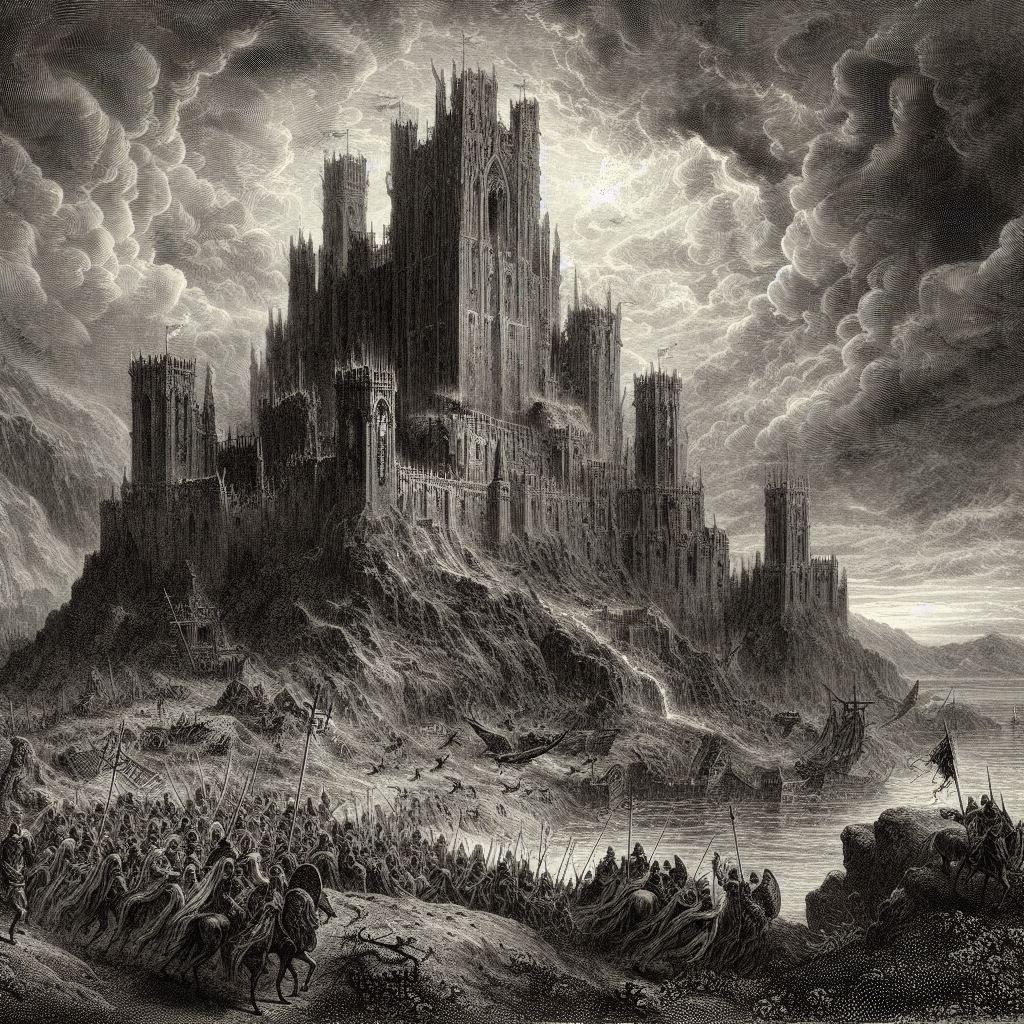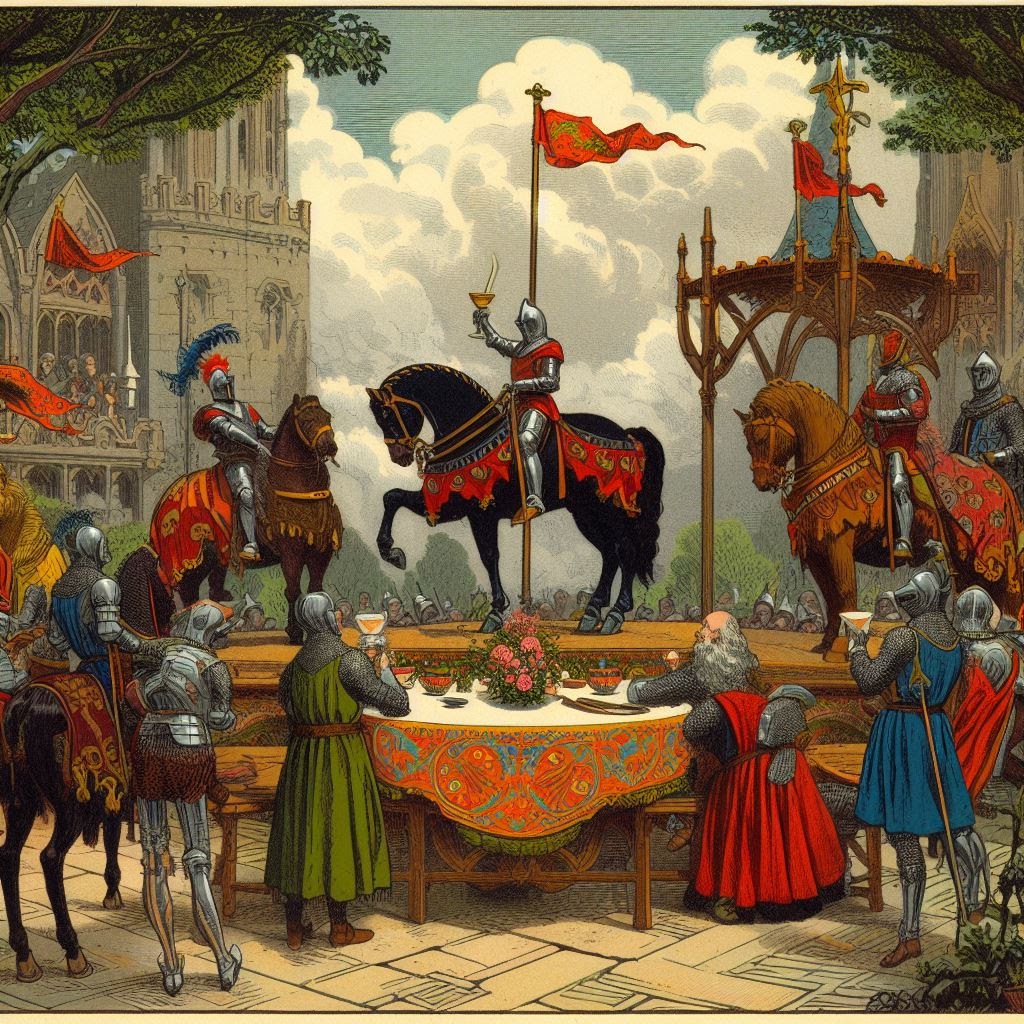Shanguo is a province defined by its rugged peaks, forested slopes, and fertile valleys. Two mountain ranges define its borders, branching off of the Imavant and gradually growing further apart, with a valley land between them that broadens as one goes east. It is down this corridor that invaders from the Imavant are most likely to pass. The Huo Dynasty began here as a humble family of pioneers. When they left to become the ruling house of Liangyu, a cadet branch of the clan remained behind to guard the region. This branch became the line of dukes known today as the Shan.
These lands are less densely populated than the east. Flat land is hard to come by, so animal herding is more common than farming. Many of the humans live semi-nomadic lives not much different than the canids of the Imavant. But some towns have sprung up. Timber is plentiful, and there are rich deposits of jade and other minerals. Silk is also an important product of the region, as it is in the east. Unlike the common practice in the east, the people of the west own their property outright, and jealously guard their rights to their land. But all owe fealty to the Dukes of Shan, and send a tithe of their produce to the stronghold of Hei Chao in the foothills of the southern range.
Hei Chao's charred sides tower above the surrounding hills, the relic of some wilder and more chaotic age. The mountain has stood quiet for as long as anyone can remember. Perhaps whatever primal fires once built this place have died off for good.
The outer surface is steep, almost sheer in places. The volcanic rock is smooth and slick, but crossed by jagged edges which wind and rain have scoured but not dulled. Scaling it would be a fool's errand. Breaching it would take some craft that engineers do not currently possess. Perhaps if all the black powder in the world were gathered, one could conceive of such a thing. As it stands, entrance into the old caldera is gained only by flight or by natural openings in the rock, the tunnels that molten stone once ran through long ago. How many of these there are is a state secret. Only one entrance is publicly known, but all are guarded carefully.
Beyond the bronze gates and the cool tunnel, one comes into a bowl-shaped landscape surrounded by the mountain's dark wall. The caldera floor is green and fertile. A small lake lays at the center, well-stocked with fish. The plains north of the lake are given to farms and orchards. The east and west sides are pastures for sheep and cattle. Close to the north wall are pastures for the famed sheng runners, the mounts the army uses for light cavalry.
As the ground slopes up, mansions and estates hug the sunny sides of the cliff. The earliest settlers chose to build their homes here where the most sunlight could be found. Many of these families still own their original plots, although some have fallen to obscurity. The palace of the dukes dominates the area. Further up, along the very walls of the volcano, are eyries for the zhao fliers. On most days a few of these can be seen drifting through the air high above or swooping down to snag a fish from the lake. Watch posts on the rim and outer slopes of the mountain are rotated constantly and most are accessible only by flight.
The southern side of the caldera is almost always shadowed by the cliff above it, and thus is less desirable real estate. Pigsties can be found here, along with farms of fungi and edible lichens, generally used for animal feed. Much of the area is given to storage pits and warehouses, stocked with provender, non-perishable food, and fuel for the cold winters. These stand near businesses such as slaughterhouses and tanneries, soap-makers and chandlers. A town has sprung up around these businesses. The inhabitants are commonly called shaders.
On the south edge of the lake, a rocky hill rises up. A fortress stands on its western side. Called the Rock of Last Resort, it is meant to be the fallback position in case the mountain is ever breached. This is where the soldiery train and drill, and where councils of war are generally held. There are said to be pits and caverns beneath it which contain food and weaponry for a prolonged siege, as well as dungeons to house dangerous prisoners. There are even whispers of secret passages that lead to caverns deeper still. In the summer when the northern slopes grow hot, the Duke and his family come here, to cooler but somewhat austere quarters. This also gives him a chance to check up on the store of supplies. Many courtiers and other slopers accompany them, and it is common for rich northern youths to go slumming in the shader taverns. Many a concubine got her start from the results of such adventuring, and several legendary fortunes have been lost in the town's gambling dens.
Anyone who grew up in Hei Chao will proudly tell you if they were born a sloper or a shader. Common chatter portrays slopers as spoiled and rich-- although no one would say this about the Duke and his family, Heaven preserve them. Shaders on the other hand are poor and scrappy. The truth is, of course, more nuanced. Most of the estates and buildings on the north slope belong to the oldest families in the mountain. But that does not always mean that these families became wealthy, or maintained what wealth they did gain. Furthermore there are family servants and retainers who live on the slopes, as well as soldiers, scouts, and the trainers of the zhao fliers. Meanwhile in the shadowed side there are merchants, artificers, and warehouse owners who have done quite well for themselves, not to mention officers and soldiers who gained plunder in the war. Despite these facts, the stereotypes remain in the minds of most. The mild rivalry between the north and south sides will extend even to expatriates who have not been to the mountain in decades, should they chance to meet one another.
With its food supply and nigh-impregnable walls, the mountain is well defended. Its one weakness are its bronze gates, which now seem painfully vulnerable to cannon fire. True, the narrow tunnels they guard would still be a killing zone that could long be held by defenders. But much thought and debate is currently being held over strengthening the defenses. Some have suggested building iron gates at multiple points along the tunnels and hollowing out spots behind them from which to shoot projectiles. But given the scarcity of the new metal and of workers skilled in its use, this would be a considerable expense. Others have suggested a curtain wall in the caldera itself to guard the opening of the main tunnel. But how much of the valuable space inside the mountain should be reallocated for this is unclear. No one is eager to give up their land for the project, but by the same token no one wishes to see the mountain fall to the King's men.

















